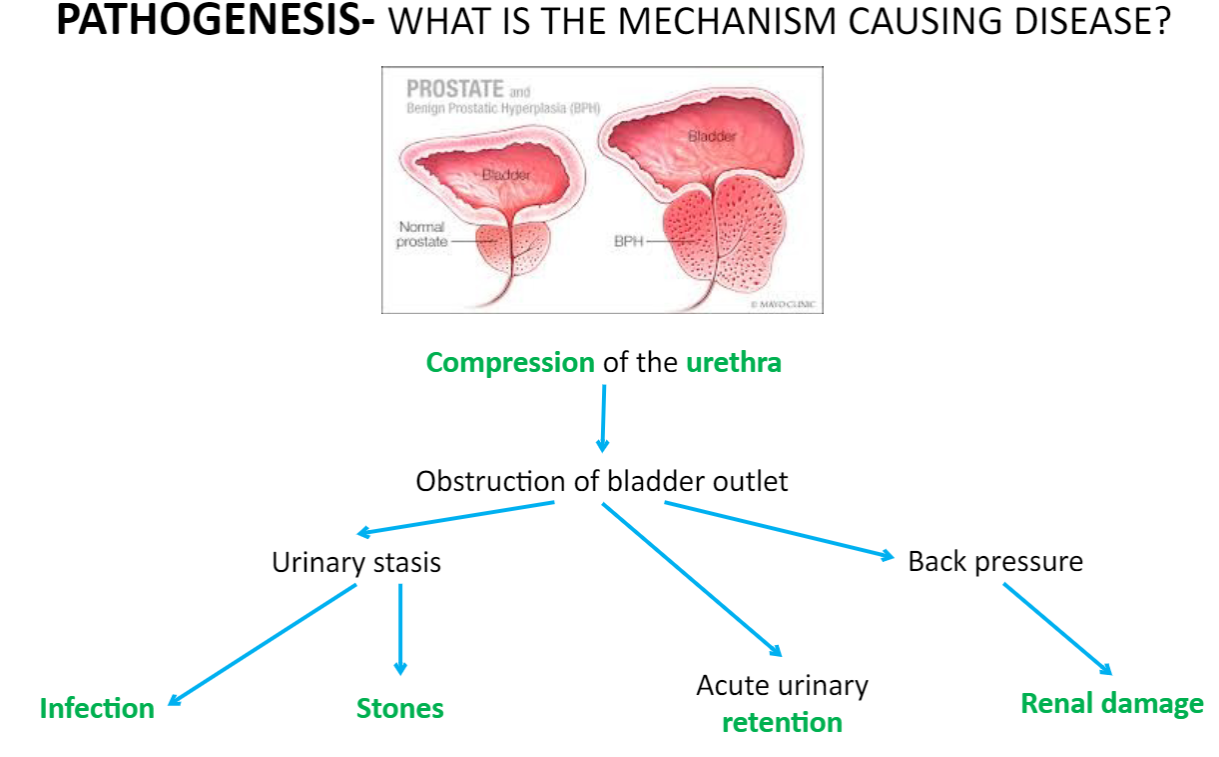Benign Prostatic Hyperplasia (BPH) is a non-cancerous enlargement of the prostate gland, which is located just below the bladder and surrounds the urethra. Increased number of both stromal and glandular cells in the prostate
Causes/Factors
- Old men
- Obesity
- Diabetes
- FH
- Testosterone levels

Symptoms
- Hesitancy
- Weak flow
- Urgency
- Frequency
- Intermittency
- Straining
- Terminal dribbling
- Incomplete emptying
- Nocturia
Signs
- Smooth symmetrical, slightly soft enlarged prostate on DRE
- Abdominal mass - palpable bladder and other abnormalities
Diagnostic Tests
- Digital Rectal Exam (DRE): Examination of the prostate through the rectum to assess its size and texture.
- Prostate-Specific Antigen (PSA) Test: Blood test to measure PSA levels (elevated levels may indicate BPH or other prostate conditions).
- Urinalysis: To rule out Urinary Tract Infections, haematuria and other pathology
Prostate-specific antigen
Known to be unreliable with a high rate of false positives (75%) and false negatives (15%). Common causes of raised PSA are:
- Prostate cancer
- BPH
- Prostatitis
- Urinary Tract Infections
- Vigorous exercise (cycling especially)
- Recent ejaculation or prostate stimulation
Management
- Watchful Waiting: For mild symptoms, regular monitoring without immediate treatment.
- Medications:
- alpha blockers - tamsulosin. Relax smooth muscle with rapid symptom improvement. Notable side effect of postural hypotension
- 5-alpha reductase inhibitors - finasteride. Prevent the conversion of testosterone to DHT which is more potent. 6 months of treatment for effects to result in symptoms.
- Surgery
- Transurethral resection of prostate most common surgical treatment
- Others - Transurethral electrovaporisation of the prostate (TEVAP/TUVP), holmium laser enucleation of the prostate (HoLEP), open prostatectomy
Complications/red Flags
- Urinary Retention: Inability to urinate due to severe prostate enlargement.
- Urinary Tract Infections: Stagnant urine in the bladder can lead to infections.